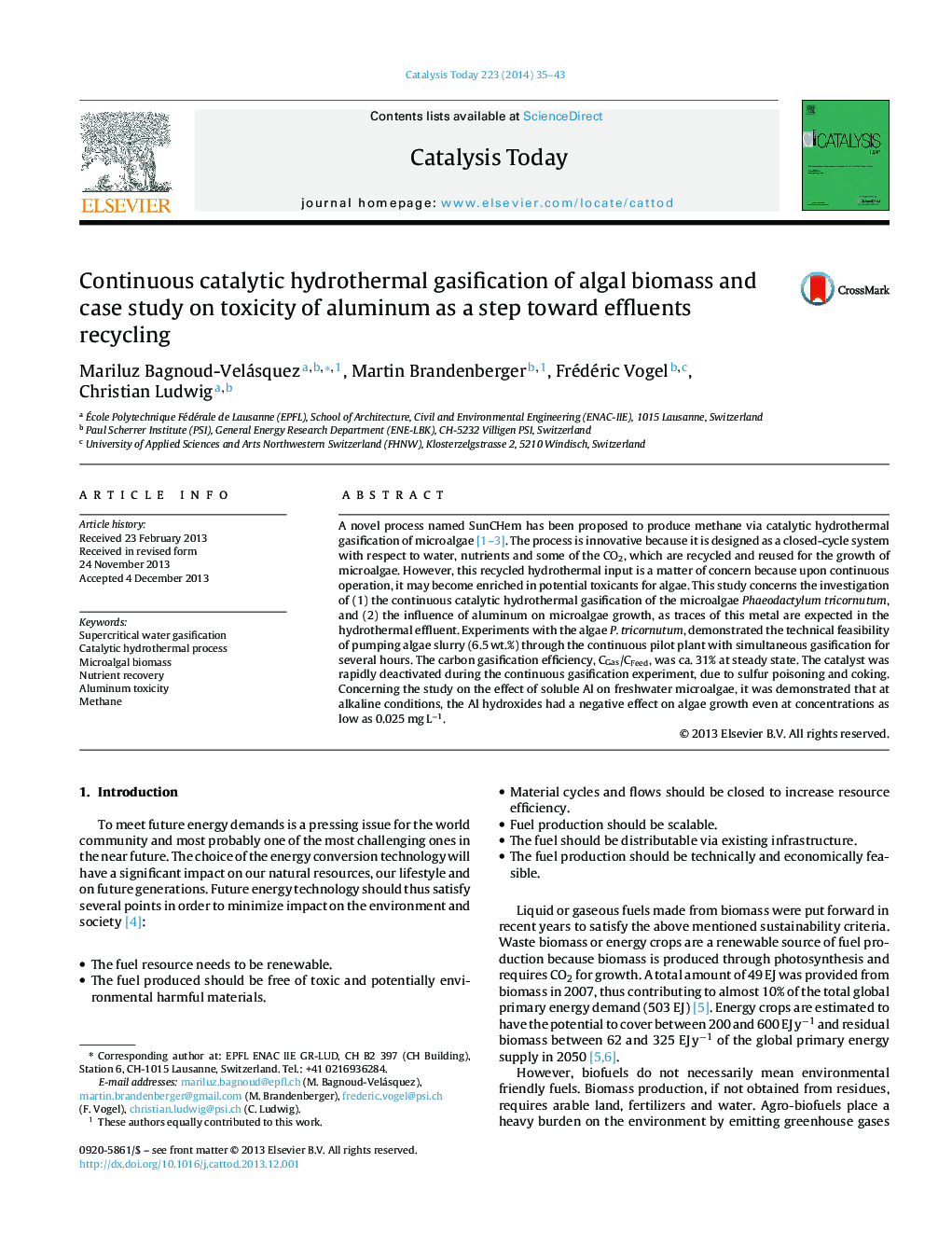| کد مقاله | کد نشریه | سال انتشار | مقاله انگلیسی | نسخه تمام متن |
|---|---|---|---|---|
| 54727 | 47024 | 2014 | 9 صفحه PDF | دانلود رایگان |
• Physical blockage is noticed in supercritical water gasification (SCWG) of algae.
• Mg, Ca and P tend to precipitate on the catalyst in SCWG of algal biomass.
• 0.025 mg L−1 of Al in the alkaline SC output is harmful enough for C. vulgaris.
• Al toxicity could be diminished by adjusting the pH in the nutrient flow.
A novel process named SunCHem has been proposed to produce methane via catalytic hydrothermal gasification of microalgae [1], [2] and [3]. The process is innovative because it is designed as a closed-cycle system with respect to water, nutrients and some of the CO2, which are recycled and reused for the growth of microalgae. However, this recycled hydrothermal input is a matter of concern because upon continuous operation, it may become enriched in potential toxicants for algae. This study concerns the investigation of (1) the continuous catalytic hydrothermal gasification of the microalgae Phaeodactylum tricornutum, and (2) the influence of aluminum on microalgae growth, as traces of this metal are expected in the hydrothermal effluent. Experiments with the algae P. tricornutum, demonstrated the technical feasibility of pumping algae slurry (6.5 wt.%) through the continuous pilot plant with simultaneous gasification for several hours. The carbon gasification efficiency, CGas/CFeed, was ca. 31% at steady state. The catalyst was rapidly deactivated during the continuous gasification experiment, due to sulfur poisoning and coking. Concerning the study on the effect of soluble Al on freshwater microalgae, it was demonstrated that at alkaline conditions, the Al hydroxides had a negative effect on algae growth even at concentrations as low as 0.025 mg L−1.
Figure optionsDownload high-quality image (134 K)Download as PowerPoint slide
Journal: Catalysis Today - Volume 223, 15 March 2014, Pages 35–43
